A symbol of luxury and tradition, Pashmina has captivated fashion lovers for centuries. Its fine texture and timeless elegance make it a popular choice for those seeking both comfort and style. But with its premium price tag, the question often arises: Is Pashmina really worth the investment?
Pashmina comes from the undercoat of Changthangi goats found in the high-altitude regions of Ladakh, India. It is one of the softest and most luxurious fabrics in the world. Unlike regular Cashmere, which may come from different regions and goat breeds, authentic Cashmere requires meticulous craftsmanship and is hand-processed into Pashmina products. These can be Pashmina shawls, scarves, or wraps. This unique combination of material quality and artisan expertise has earned Pashmina its revered status in the fashion world. But the high cost can leave consumers wondering if it's truly worth it.
In this blog, we’ll explore whether buying Pashmina is a wise decision. We will evaluate various aspects, such as its unmatched quality, craftsmanship, cultural significance, and sustainability. We’ll also take a closer look at why Pashmina stands out from other luxury fabrics and how its durability makes it a long-term investment. Additionally, we’ll delve into its eco-friendly production process and the ethical impact of purchasing Pashmina on local communities.
What is Pashmina?
When considering 'is Pashmina worth buying', it’s important to first understand what makes this fabric so unique. Pashmina is a luxurious art form that includes the finest Cashmere wool. The wool itself comes from the undercoat of Changthangi goats, native to the high-altitude regions of Ladakh, India. The extreme cold in these areas causes the goats to grow a soft, fine undercoat that helps them survive the freezing temperatures. This undercoat, known as Cashmere, is the material that forms the foundation of Pashmina.
The Source
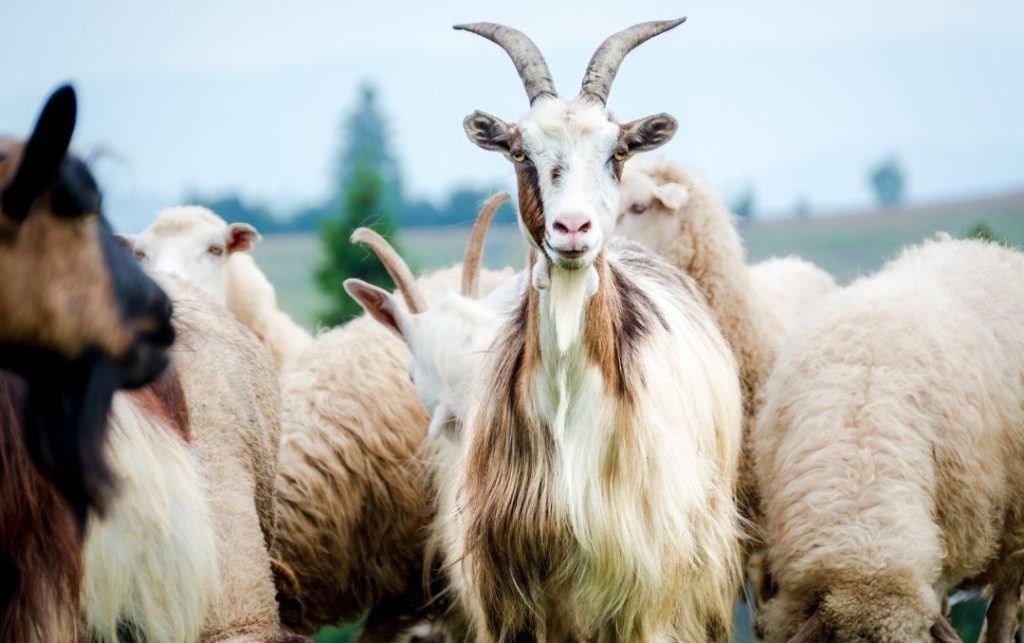
Pashmina begins with Cashmere, which herders harvest from these Changthangi goats through a careful, humane process. The goats naturally shed their undercoat in the spring, and herders gather the wool through hand-combing. They also ensure that only the finest and softest fibers are collected. Unlike mass-produced materials, Pashmina requires a delicate touch right from the start. The quality of this wool is exceptionally fine, with a fiber diameter of 12-15 microns, far thinner and softer than regular sheep wool, which contributes to its luxurious texture and warmth.
However, what truly sets Pashmina apart is the luxury products. Pashmina refers to the art that involves the spinning, weaving, and embroidering Cashmere wool into beautiful products. These include shawls, scarves, and other high-end fashion items.
Handcrafting Pashmina
The creation of a Pashmina product is a labor-intensive process that showcases the artistry and skills of the Kashmiri weavers. After the wool is collected, it undergoes a manual process of hand-spinning, using a traditional spinning wheel known as the charkha. This delicate task can take weeks, as artisans spin the fibers into fine threads by hand to preserve their softness.
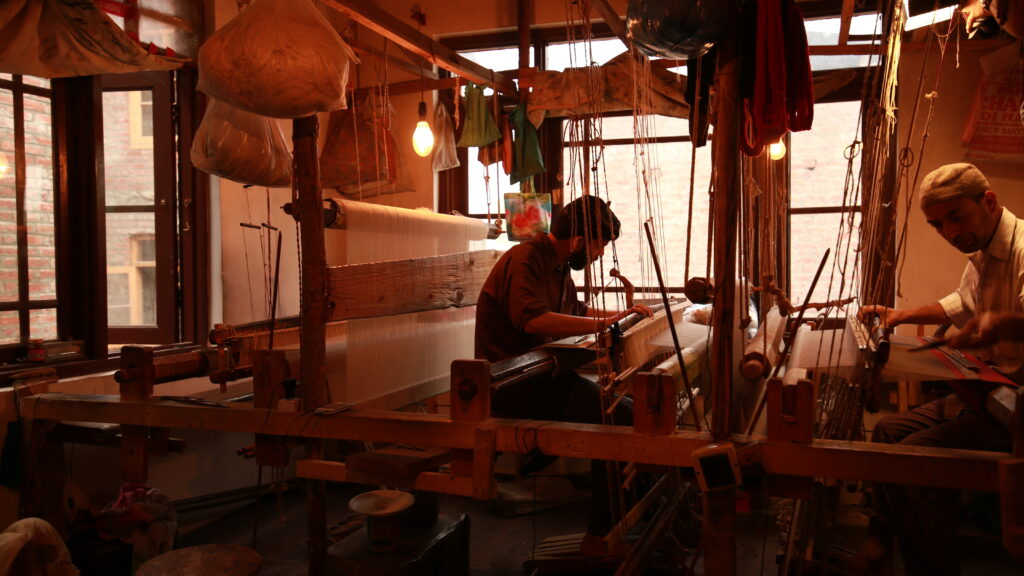
Once spun, weavers weave the threads into fabric using handlooms. Hand-weaving requires immense patience and precision, as the fabric’s ultra-fine texture can fall prey to damage. Skilled artisans work meticulously to ensure that each shawl or scarf retains its softness and lightness while being strong enough to last for years. Artisans beautify some Pashmina products with intricate embroidery, often involving traditional Kashmiri designs such as Sozni or Kani work. Each piece is a unique work of art that can take several months to complete.
Pashmina’s Unique Qualities
Pashmina stands out among other fabrics due to its exceptional qualities. Its ultra-fine texture and lightweight feel provide a level of comfort and warmth that few other materials can match. The products are incredibly soft to the touch, almost weightless, and yet, they offer unmatched warmth, making them ideal for both fashion and practicality in colder climates. The luxurious feel and timeless elegance of Pashmina have made it a symbol of sophistication and status for centuries.
Difference Between Cashmere and Pashmina
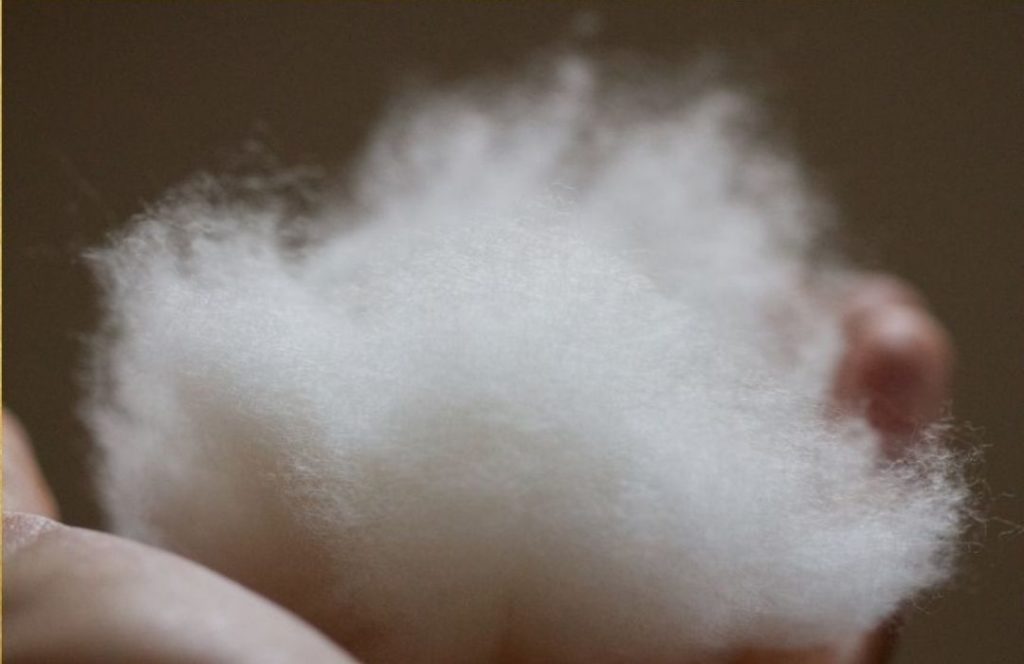
One common misconception is that Cashmere and Pashmina are the same. While they are closely related, there is a key distinction. Cashmere refers to the wool that herders obtain from the Changthangi goat. One can use Cashmere in a variety of ways. Pashmina, on the other hand, refers specifically to the traditional art of processing this fine Cashmere wool into luxury products. Hand-spun and hand-woven, Pashmina represents the pinnacle of craftsmanship, whereas Cashmere can also be processed by machine and mass-produced, often resulting in products that are less fine than Pashmina.
Understanding the source, craftsmanship, and unique qualities provide a clearer picture of why it is one of the most luxurious fabrics in the world. With this understanding, it becomes easier to assess whether Pashmina is worth buying, not only for its beauty and elegance but also for the rich tradition and skill that go into creating each piece.
Why is Pashmina Expensive?
When pondering Is Pashmina worth buying, understanding the factors behind its high price tag is crucial. It is not just a luxury art but an intricate blend of rare material, masterful craftsmanship, and global demand. The cost of a genuine shawl or scarf reflects much more than just the fabric; it embodies centuries of tradition, painstaking artistry, and a commitment to quality. Several factors contribute to its high price, and each plays a vital role in making Pashmina one of the most prized textiles in the world.
Rarity of the Material
One of the primary reasons why Pashmina is so expensive lies in the scarcity of its raw material. Cashmere wool comes from the undercoat of the Changthangi goat, a breed native to the high-altitude regions of Ladakh in India. These goats live at altitudes of over 14,000 feet, enduring freezing temperatures, which is why their undercoat is so fine and soft. Cashmere is extremely rare due to the limited number of Changthangi goats and the challenging environment in which herders raise them.
It is the spring molting season when the goats naturally shed their undercoat that herders collect their wool. They carefully comb the goats to collect the wool. This process makes sure to obtain the highest quality fibers without harming the animals. Each goat produces only a few ounces of this wool per year, which is why Pashmina production remains so exclusive. The rarity of the Changthangi goat and the limited yield of Cashmere make the material incredibly scarce, driving up its price and adding to its exclusivity. This rarity poses the first answer to the question Is Pashmina worth buying - it is not just a fabric but a rare, natural resource.
Craftsmanship
The process of transforming raw Cashmere into a finished Pashmina shawl is a labor-intensive, artisanal craft that has come down through generations. Skilled artisans in Kashmir and Ladakh use traditional techniques to spin, weave, and embroider the wool by hand, a practice that can take months to complete for a single piece. After herders collect the wool, artisans hand-spin it into delicate threads using a spinning wheel known as a charkha. This manual process is incredibly slow but preserves the softness and fineness of the fibers, ensuring that the end product is of the highest quality.
Once spun, weavers weave the threads into fabric using handlooms. Hand-weaving is a meticulous task that requires precision and patience. Each shawl or scarf is woven thread by thread, and any mistake can ruin the entire piece. Some shawls are further embellished with intricate hand-embroideries such as Sozni or Kani work, which adds weeks or even months to the production time. This painstaking process, requiring the expertise of skilled artisans, significantly adds to the cost of genuine Pashmina products.
Quality Control
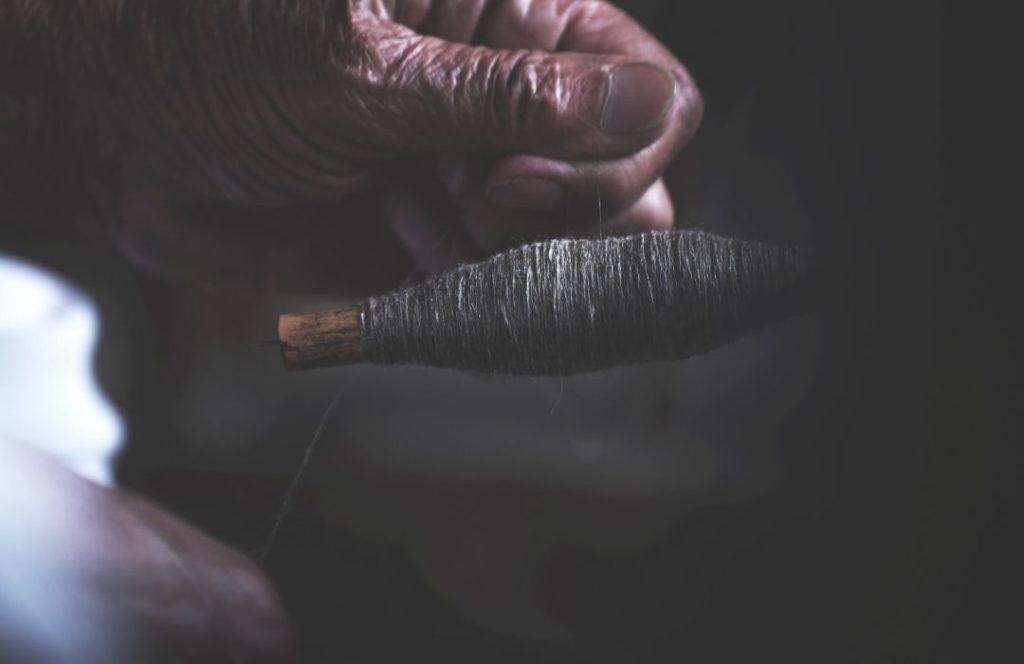
Quality control plays an essential role in the Pashmina production process, ensuring that only the finest shawls reach the market. From the moment the wool is collected to the final product, each step undergoes strict quality checks. The fiber selection is crucial. Only the finest and softest Cashmere fibers, usually with a diameter of 12-16 microns, are suitable for Pashmina. Artisans and quality controllers inspect the fibers for length, strength, and consistency to ensure that the finished product will be both soft and durable.
The weaving process also undergoes scrutiny. Any flaws in the weave can compromise the quality of the fabric, so every shawl is carefully examined for consistency and uniformity. Genuine products often come with certification or labels that authenticate their origin and quality. This level of quality control adds to the production cost but guarantees that buyers receive a luxury product that will last for generations. The rigorous quality checks offer another key reason to answer Is Pashmina worth buying—it’s not just any fabric but one that undergoes meticulous oversight to ensure perfection.
Sustainability
In today’s world of fast fashion, sustainability has become a significant factor for conscious consumers. Pashmina stands out as an eco-friendly luxury option. The production process of Cashmere wool, particularly in the regions of Ladakh and Kashmir, is rooted in traditional, sustainable methods. Artisans use natural methods of hand-combing the goats, as opposed to shearing or mass-harvesting, which could harm the animals. Additionally, the dyes used in production are often low-impact or natural, further reducing the environmental footprint.
The tools used in production, such as the charkha and handlooms, are manually operated, requiring no electricity or heavy machinery. This reliance on traditional tools not only preserves the environment but also supports local communities. Moreover, it helps sustain the craft for future generations. For buyers seeking eco-friendly fashion choices, the sustainability of Pashmina offers an added layer of value. Choosing Pashmina is a statement in favor of responsible luxury, making the question Is Pashmina worth buying easier to answer in favor of ethical fashion.
Market Demand and Global Status
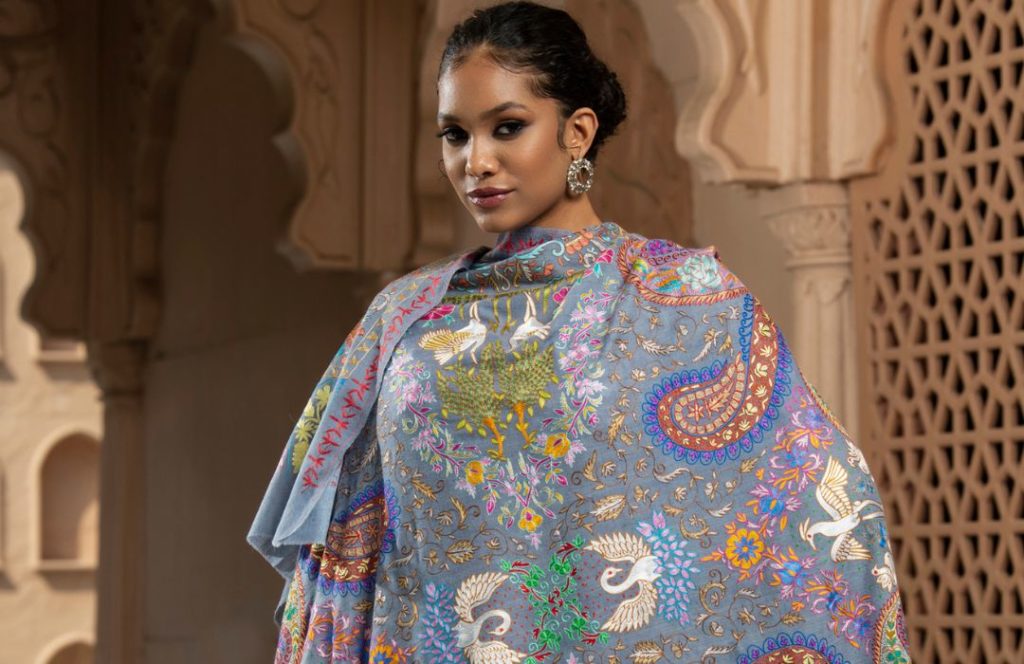
The global demand for Pashmina shawls and scarves has skyrocketed in recent years, particularly among celebrities, royalty, and fashion enthusiasts. Pashmina’s luxurious feel, combined with its exclusivity, has cemented its status as a symbol of ultimate sophistication. Celebrities and fashion designers frequently showcase Pashmina on runways, red carpets, and high-profile events, further elevating its desirability.
Pashmina products are often seen as status symbols, and owning a genuine shawl is a mark of distinction. The scarcity of the material, combined with the labor-intensive craftsmanship, ensures that each piece is a unique, high-end fashion item. This exclusivity keeps the demand high, which in turn drives up the price. While Cashmere is also popular in global markets, Pashmina remains the more luxurious and expensive option due to its cultural heritage, craftsmanship, and rarity.
Hence, several key factors contribute to the high cost. This includes the rarity of the material, the labor-intensive craftsmanship, the rigorous quality control, and its sustainability. The global demand for this luxurious fabric further drives up its price, making it a coveted item among fashion enthusiasts and collectors. Answering the question Is Pashmina worth buying involves considering these factors. In fact, for many, the investment in a timeless, high-quality Pashmina product is worth every penny.
Also read: Pashmina showcases a Luxury of Hand Embroidery
Conclusion
Pashmina holds a special place in the world of fashion and culture. Its unique qualities—luxurious softness, intricate craftsmanship, and rich cultural heritage—make it a prized possession. When asking, "Is Pashmina worth buying?" the answer lies in its premium quality, the painstaking manual processes involved, and its ethical, sustainable production. From its rarity to its connection with Kashmiri tradition, Pashmina is not just a purchase but a statement of timeless elegance.
More than just art, Pashmina embodies tradition, artistry, and sustainability. Its durability and ability to transcend trends ensure that it remains a staple in any wardrobe for years to come. Wearing Pashmina is not only about fashion but also about preserving heritage and supporting artisans who keep these ancient crafts alive.
If you're seeking a blend of luxury, culture, and sustainability, authentic Pashmina is an investment worth making. Embrace its timeless elegance and consider adding it to your collection - a piece that holds cultural value and makes a positive environmental impact